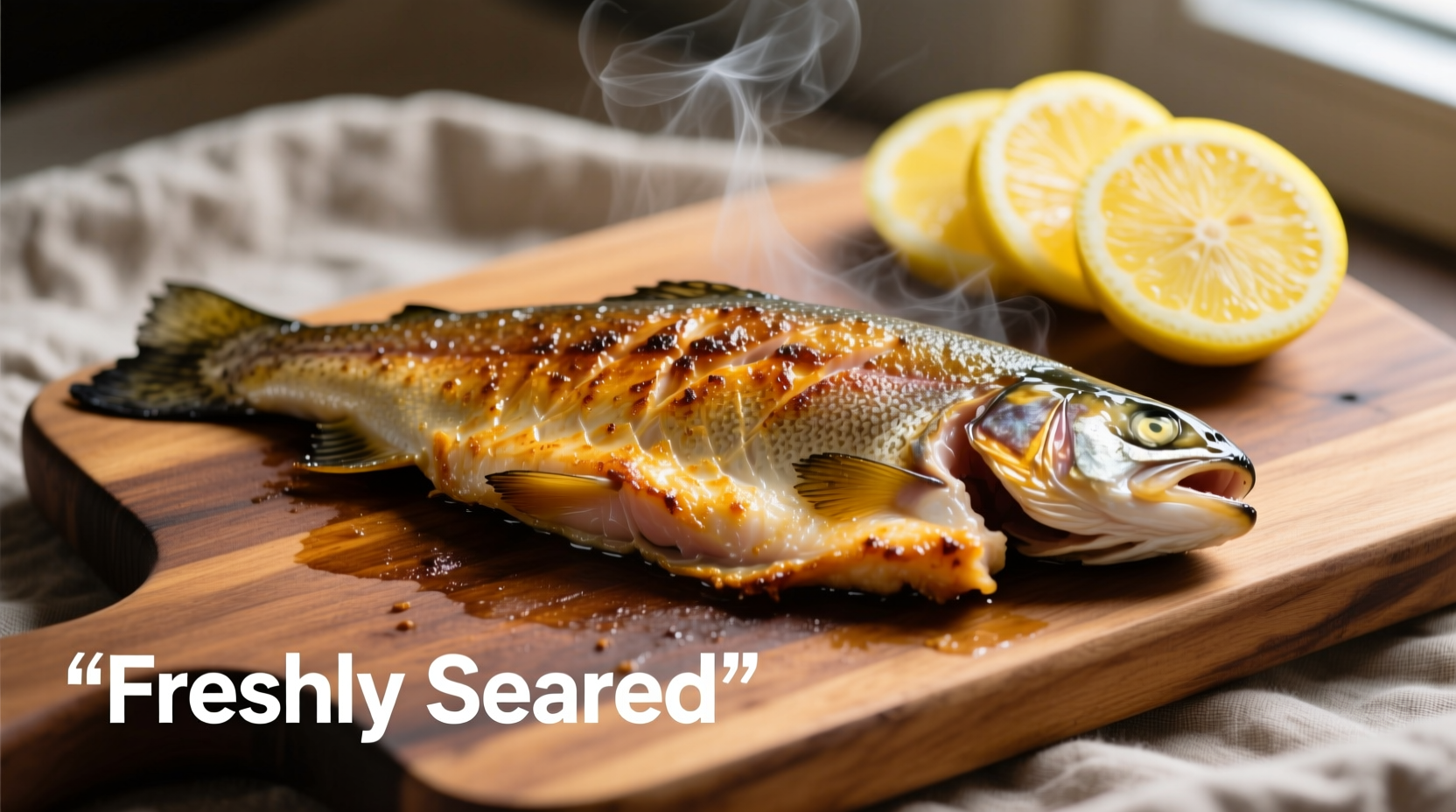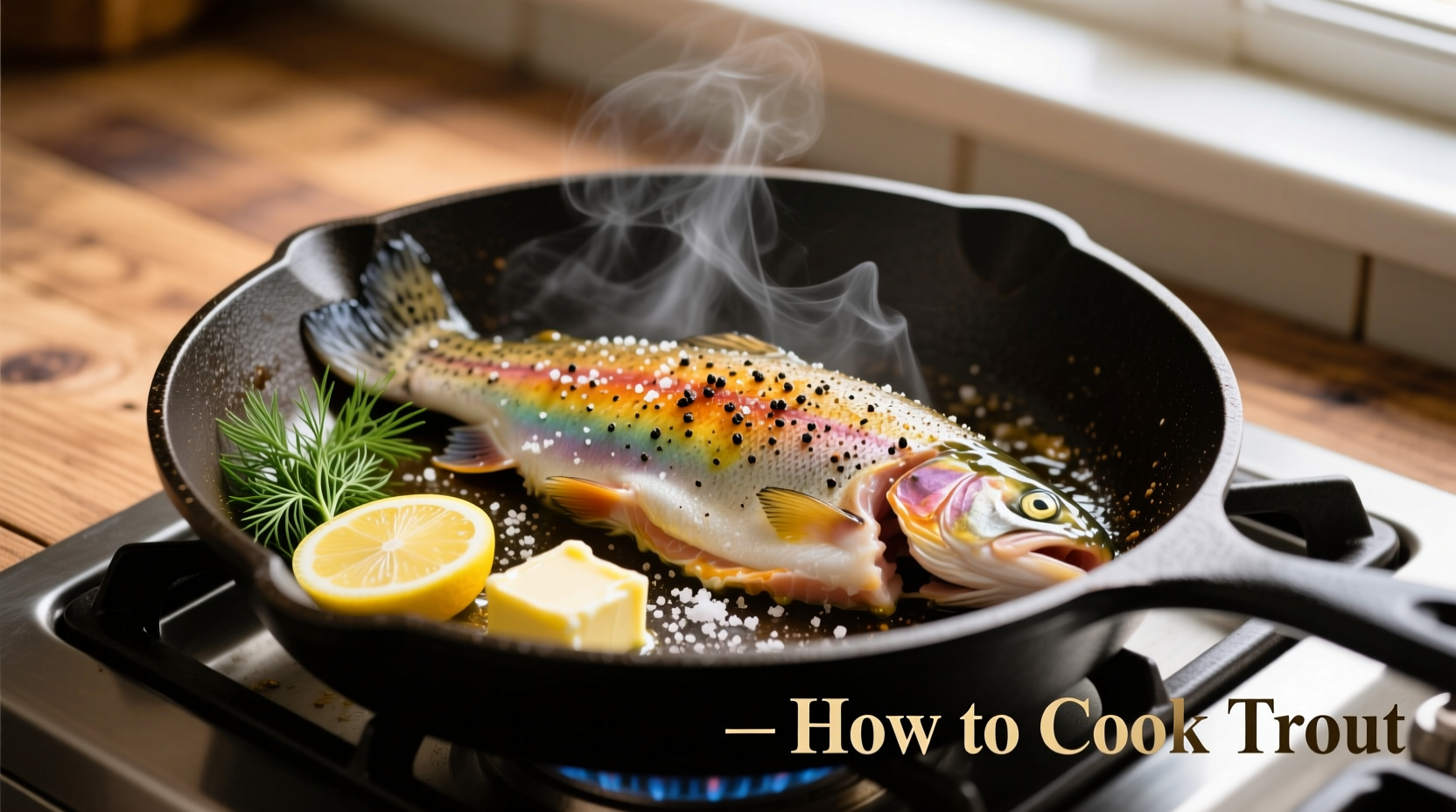Perfectly cooked trout should reach an internal temperature of 145°F (63°C), flake easily with a fork, and maintain moist, tender flesh. The best cooking methods include pan-searing for crispy skin, baking for hands-off preparation, and grilling for smoky flavor—each requiring precise timing based on fillet thickness.
Mastering Trout Cooking: From Stream to Plate
Cooking trout properly transforms this delicate freshwater fish into a restaurant-quality meal with minimal effort. Whether you've caught your own or purchased fresh fillets, understanding the nuances of trout preparation ensures consistently delicious results. This guide breaks down professional techniques that guarantee perfect trout every time—no culinary degree required.Why Trout Deserves Special Attention
Trout's delicate texture and subtle flavor make it more challenging to cook than heartier fish like salmon. Overcooking by even 60 seconds can turn moist flesh dry and rubbery. Unlike saltwater varieties, freshwater trout contains less natural fat, requiring precise temperature control. The USDA Food Safety and Inspection Service confirms that fish reaches safe eating temperature at 145°F (63°C), but many chefs pull trout at 140°F (60°C) since residual heat continues cooking during resting.| Cooking Method | Prep Time | Cook Time | Best For |
|---|---|---|---|
| Pan-Seared | 10 min | 6-8 min | Crispy skin enthusiasts |
| Oven-Baked | 15 min | 12-15 min | Hands-off preparation |
| Grilled | 20 min | 8-10 min | Smoky flavor lovers |
Essential Preparation Steps
Scaling and Cleaning Fresh whole trout requires proper cleaning. The University of Minnesota Extension recommends scaling with a fish scaler or knife, working from tail to head. Remove gills and internal organs, then rinse thoroughly inside and out with cold water. For fillets, check for remaining pin bones using tweezers or needle-nose pliers. Drying Technique Pat trout completely dry with paper towels—this critical step creates the perfect sear. Moisture on the surface steams rather than sears the fish. Refrigerate on a wire rack for 30 minutes before cooking to further dry the skin, as suggested by culinary experts at the Culinary Institute of America.Three Foolproof Cooking Methods

Pan-Seared Trout with Crispy Skin
- Heat 1 tablespoon oil in cast-iron skillet over medium-high heat until shimmering
- Season skin-side with salt (no oil needed on skin)
- Place skin-side down in hot pan, pressing gently for 10 seconds
- Cook undisturbed for 4-5 minutes until skin releases naturally
- Flip and cook flesh side 2-3 minutes until internal temperature reaches 140°F
Oven-Baked Trout for Perfect Doneness
- Preheat oven to 400°F (204°C)
- Place seasoned fillets on parchment-lined baking sheet
- Add 2 tablespoons broth or wine to pan for moisture
- Bake 10-12 minutes for 1-inch thick fillets
- Finish under broiler 1-2 minutes for golden top
Grilled Trout with Smoky Flavor
- Preheat grill to medium-high (375-400°F)
- Oil grates thoroughly and wipe excess
- Place skin-side down on grill at 45° angle to grates
- Cook 4-5 minutes until skin releases, then rotate 90° for grill marks
- Flip and cook 2-3 minutes until flaky
Avoiding Common Trout Mistakes
Overcooking Trout cooks faster than many realize. A 1-inch fillet needs just 8-10 minutes total. Insert an instant-read thermometer into the thickest part—remove from heat at 140°F as carryover cooking will reach the safe 145°F. Wrong Oil Temperature Oil should shimmer but not smoke. Test with a breadcrumb—it should sizzle immediately but not burn. Too cool causes sticking; too hot burns the exterior before interior cooks. Moving Too Soon Resist flipping until the fish releases naturally from the cooking surface. This indicates proper sear formation. For grilling, the 45-degree placement trick prevents sticking while creating attractive marks.Flavor Pairings and Serving Suggestions
Trout's mild flavor pairs beautifully with:- Citrus: Lemon, orange, or grapefruit segments
- Herbs: Dill, parsley, or tarragon
- Acids: White wine vinegar or apple cider reduction
- Vegetables: Asparagus, fennel, or roasted potatoes











 浙公网安备
33010002000092号
浙公网安备
33010002000092号 浙B2-20120091-4
浙B2-20120091-4